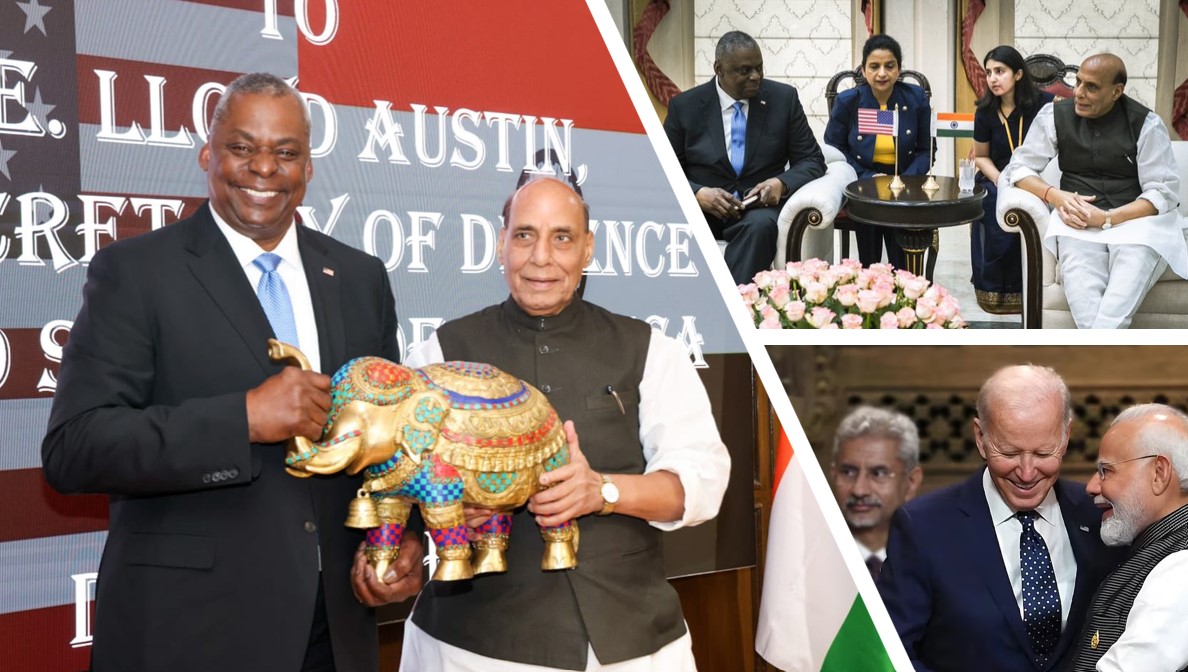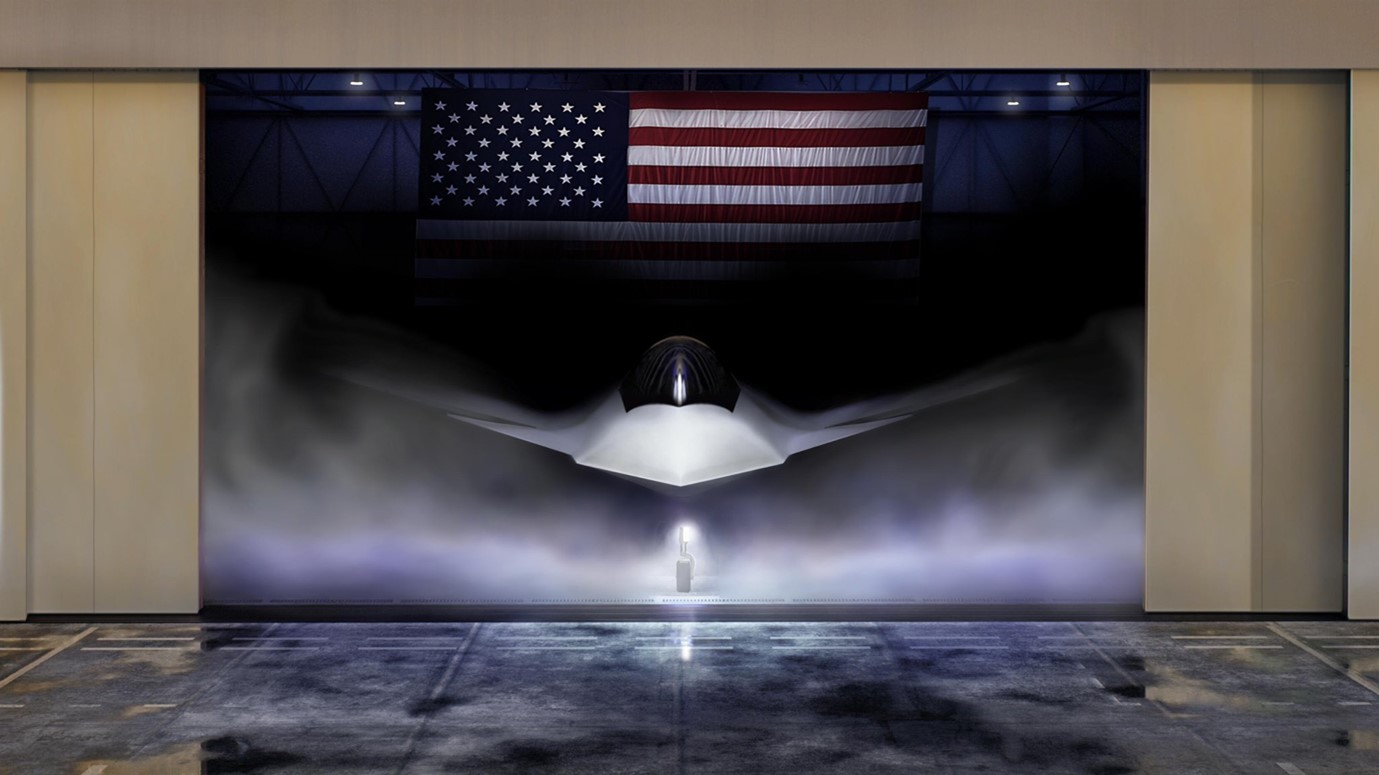
Cold War 2.0 : India – An Inescapable Bet For The USA

Backdrop
India-U.S. “Comprehensive Global Strategic Partnership” has become one of the most significant partnerships in the 21st Century in light of the ongoing ‘Cold War 2.0’ between the US and China. Although both countries maintain that the partnership is based on shared democratic values and increasing convergence of interests on bilateral, regional and global issues, the most important commonality of interests spanning multiple fields, is the challenge posed by Chinese aggressiveness to both. It has catalysed the pace of synergy of thought as well as actions to push forward the shared vision and common goal of ‘Rule-based Order’ and ‘Free and Open Indo-Pacific’ into a series of agreements, some of which are a ‘work in progress’. The impending Summit of Prime Minister Modi and President Biden scheduled later this month and the recently concluded visit of US Defence Secretary Lloyd Austin to India are promising steps in that direction.
Why India is an ‘Inescapable Bet’ for the USA and Vice Versa?
At the global stage, China wants to dislodge the US as a superpower by 2049 and at a regional stage it wants a China-centric Asia, leading to the containment of India. This congruence of interest is a long-term engagement in the context of long-term US-China strategic competition identified in the book “A Hundred Year Marathon” written by Michael Pillsbury. It is also a fact that China is an Indian neighbour with an unsettled border, which is unlikely to be resolved in the near term, even if some de-escalation takes place on the LAC; hence, will continue to pose a threat to India in the long term. The longevity of this common challenge is also a stimulating factor for Indo-US partnerships.
There are some sceptic voices in the USA which warn of wrong expectations like Ashley J. Tellis in Foreign Affairs” through his contribution “America’s Bad Bet on India-India won’t side with the US against China”. India is geopolitically, strategically and geographically so positioned that the USA needs India to tackle China in multiple domains. Besides dominating Chinese Sea Lines of Communications (SLOC) in the Indian Ocean, India offers a growing market, a manufacturing hub with cost and demographic advantages, a powerful military, and diplomatic outreach to some of the countries, which have adversarial relations with the USA. With China-Russia-Iran-North Korea getting together and a few others waiting in the wings, the US needs credible strong partners in Indo-Pacific Region. I, therefore, argue that India is ‘America’s Inescapable Bet’ as much as India needs US cooperation in multiple fields.
Why Defence Cooperation is Emerging in the Forefront of Indo-US Relations?
One of the major concerns of the USA in exploiting the full potential of a partnership with India is due to India’s heavy dependence on the Russian defence industry. The root cause of such dependence was that for many decades in the past, the US was denying critical technology to India especially in the defence sector, while arming dictatorial regimes in Pakistan to balance out India and investing heavily in China leading to its unprecedented rise. India, left with two belligerent neighbours, posing two front threats had no choice but to depend on Russia, which helped India with military equipment and transfer of technology to develop existing defence infrastructure. To get India on board to common goals of tackling China’s challenge, military capacity building of India with reduced Russian dependence is necessary from the US point of view. From the Indian perspective too, it is necessary to be self-reliant and diversify military procurement to avoid bottlenecks in the defence supply chain in crisis and have adequate surge capability to take on the needs for longer wars, which may well be a reality in future, after the ongoing war in Ukraine.
Secondly, India remains the world’s top arms importer accounting for 11 percent of global arms purchase, which is a lucrative market, whereas the USA has lost out to France as the second largest military supplier to India, after Russia. It makes economic sense for the US to expand its arms supply to India and economise its manufacturing ability by using Indian youth and facilities promising lower cost of production. From an Indian perspective, India needs critical and emerging technologies as early as yesterday to unleash its manufacturing potential suffering for the want of technology and Research and Development infrastructure. Defence Industry is a major revenue earner in US and India too wants to exploit it as a foreign exchange saver as well as an earner, as its defence industry progresses.
Ongoing Indo-US Initiatives in Defence Cooperation!
Although the Defence Technology and Trade Initiative (DTTI) between USA and India was launched in 2012 to facilitate the development of defence technology by reducing bureaucratic processes and legal requirements, it didn’t show much progress in its early years. The ‘Major Defence Partner’ status was designated by the US to India in 2016 with a focus on defence trade. Both countries signed the Logistics Exchange Memorandum of Agreement (LEMOA) in 2016. In 2018, India was elevated to Strategic Trade Authorization tier 1 status, which allows India to receive license-free access to a wide range of military and dual-use technologies. 2018 also witnessed the signing of Communications, Compatibility and Security Agreement (COMCASA) between both countries. The Industrial Security Agreement (ISA) was signed in December 2019 to facilitate the exchange of classified information between the defence industries of both countries. The Basic Exchange and Cooperation Agreement (BECA) was signed in 2020 to help India get real-time access to American geospatial intelligence.
In 2022, President Biden and Prime Minister Modi announced the U.S.-India initiative on Critical and Emerging Technology (iCET) to elevate and expand strategic technology partnerships and defence industrial cooperation between the governments, businesses, and academic institutions of both countries. India too has taken various regulatory measures to boost such cooperation in terms of increasing the FDI limit from 49 per cent to 74 per cent and facilitating joint ventures, collaborations, co-production and joint development of dual-use technologies including refining the Defence Acquisition Procedure (DAP 2020). Both countries are promoting defence sales through both the Foreign Military Sales (FMS) and Direct Commercial Sales (DCS) processes. These sales support thousands of jobs in both countries and help ensure the health of both countries’ defence industrial bases.
The bilateral trade betweenthe US and India rose from $20 billion in 2000 to $128.55 billion in the year 2022-23, making the US the largest trading partner of India. . Correspondingly, US defence trade with India increased from near-zero in 2008 to over US$20 billion in 2020 indicating a much greater pace and appetite for growth between the two countries; hence both are rightly focussing on it.
The recent visit of US Secretary of Defense Lloyd J. Austin III to India on June 4-5, reinforced the foundational agreements to conclude a new Roadmap for U.S.-India Defense Industrial Cooperation, which will fast-track technology cooperation and co-production in areas such as air combat and land mobility systems; intelligence, surveillance, and reconnaissance; munitions; and the undersea domain. Both countries are looking at specific proposals that could provide India access to cutting-edge technologies (like space, cyberspace, and artificial intelligence), support India’s defence modernization plans, review regulatory hurdles impeding closer industry-to-industry cooperation and initiate negotiations on Reciprocal Defence Procurement agreement, which will promote long-term supply chain stability and security.
Both countries are set for the launch of a new initiative by the U.S.-India Business Council on June 21 for the establishment of the India-U.S. Defence Acceleration Ecosystem (INDUS-X) to advance cutting-edge technology cooperation, designed to complement existing government-to-government collaboration by promoting innovative partnerships between U.S. and Indian companies, investors, start-up accelerators, and academic research institutions. Both countries will also be looking at an impending deal between General Electric and Hindustan Aeronautics Ltd to co-manufacture jet engines in India. Possibly, a decision regarding the F414 engines will be made public during the visit of the Indian PM to the US, later this month. These are expected not only to power Tejas Mk 2 but can trigger multiple applications in a variety of machines subject to conditions likely to be finalised by then. It can certainly be a game-changer in US-India defence cooperation with positive ripple effects on the defence industry of both countries. PM Modi’s visit to Washington, besides Indo-Pacific and defence is also expected to elevate strategic technology partnership, clean energy, and space cooperation between the two countries, besides expanding educational exchanges and people-to-people ties.
The ongoing defence cooperation also includes various measures including joint exercises to strengthen operational collaboration across all military services between the two countries to enhance interoperability. India has been at the forefront of the Quad Indo-Pacific Maritime Domain Awareness Initiative (IPMDA), which will provide cutting-edge domain awareness capability to countries across the Indo-Pacific region.
What should the US Expect and Not Expect from India?
China poses a long-term threat to democracies and rule-based order by embracing rogue and failing regimes to pursue its interest and continued aggressiveness in Indo-Pacific Region. The US can well expect India to be working together along with other strategic partners like other Quad members, France and like-minded countries to take on the challenge China poses in all domains including political, diplomatic, economic, technology and supply chain resilience, information, cyber and other non-kinetic options for rule-based order and free and open Indo-Pacific. US and West can expect full cooperation of India in the subjects listed above and those identified in Quad joint statements, and many common multilateral forums and bilateral agreements. India certainly has the potential to play a leading role as a security architecture to a peaceful and secure Indo-Pacific region.
What the US and the West should not expect from India is to give away its strategic autonomy, power to make sovereign decisions in the interest of its people and self-respect to pursue its national interest. While US and India will be of great support to each other in Kinetic action against belligerent power, threatening peace in the Indo-Pacific region including the Himalayas, both will retain autonomy in escalating/de-escalating the confrontation. What should not be expected from India is that it will follow the diktats of any power blindly, if it’s not in the interest of its people. West shouldn’t expect to find another Zelensky in India or use it as a vassal state as Macron feared for others a few months back. India is a strong country, and the only country in the world to have unsettled borders with two belligerent neighbours, both nuclear powers, one of which has the largest Army and the other has the most credible terror network in the world. The strategic behaviour of India will therefore be guided by these factors and therefore expected to be different from allies of the USA. West should not expect India’s acceptability of their interference in its internal affairs or nuanced position in the Russia-Ukraine War.
Disclaimer
The opinions expressed in this article are the author’s own and do not reflect the views of Chanakya Forum. All information provided in this article including timeliness, completeness, accuracy, suitability or validity of information referenced therein, is the sole responsibility of the author. www.chanakyaforum.com does not assume any responsibility for the same.
Chanakya Forum is now on . Click here to join our channel (@ChanakyaForum) and stay updated with the latest headlines and articles.
Important
We work round the clock to bring you the finest articles and updates from around the world. There is a team that works tirelessly to ensure that you have a seamless reading experience. But all this costs money. Please support us so that we keep doing what we do best. Happy Reading
Support Us















POST COMMENTS (1)
Air Cmde Jinendra Kumbhat (Retd)